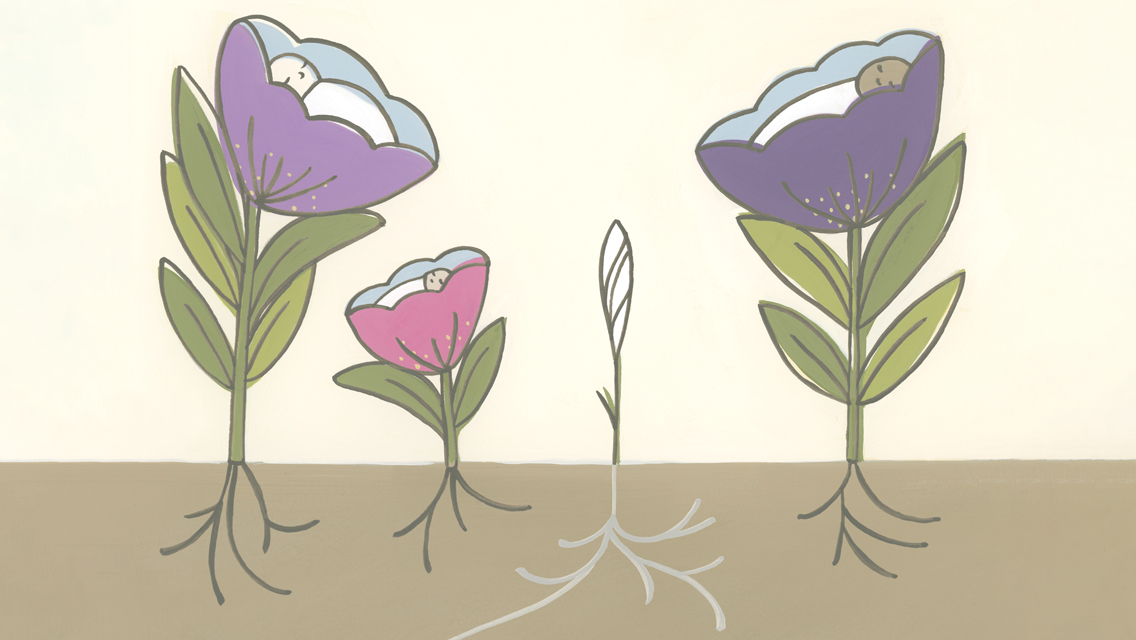Polycystic ovary syndrome, or PCOS, is a surprisingly common condition, affecting as many as one in 10 women of reproductive age. But despite its prevalence, PCOS is regularly underdiagnosed or misdiagnosed.
“On average, women go seven years before receiving an accurate diagnosis,” says women’s hormone expert Alisa Vitti. And when a woman finally does get a diagnosis, it can be more confusing than clarifying.
Part of the problem is the misleading name, say many experts, including naturopath and women’s health expert Lara Briden, ND. PCOS is a disorder in which hormonal imbalance affects the ovaries, Briden explains— not the other way around.
“Hormones are the problem,” Briden notes. “Ovaries are [just] the victim.”
PCOS can also be difficult to diagnose because there are so many different primary drivers of hormonal imbalance. The main cause of one woman’s PCOS might be inflammation, whereas another woman’s primary issue might be nutrient deficiency or insulin resistance. Some women experience symptoms for the first time after coming off hormonal birth control (known as post-pill PCOS).
The hormonal imbalances at the root of PCOS, such as high levels of testosterone and insulin, can cause a wide range of symptoms, including irregular ovulation, excessive hair growth on the chest and chin, scalp hair loss, overweight and obesity, acne, skin tags, pelvic pain, and fertility issues. Because there is such a wide range of symptoms, many women don’t think to report them. After all, skin tags and scalp hair loss may seem irrelevant when talking with your doctor about fertility. Without these important clues, however, a doctor may not think to test testosterone or blood-sugar levels, leaving out a key piece of the PCOS diagnostic puzzle.
Then there’s the matter of how to diagnose the condition. Many women receive a PCOS diagnosis after ultrasound imaging reveals small cysts on the ovaries. But while cystic ovaries are one of the diagnostic criteria for PCOS, not all women with PCOS have polycystic ovaries. To complicate matters further, many women have ovarian cysts but don’t have PCOS. (Ovaries are cystic by nature, so seeing cysts on an ultrasound can indicate PCOS — or be perfectly in line with a woman’s cycle that month.)
Taming PCOS With Lifestyle
So how do you deal with PCOS? Doctors often prescribe hormonal birth control as a first-line treatment for women with PCOS, but the pill doesn’t treat the underlying hormonal imbalance. It only masks symptoms, which can reemerge when the patient goes off the pill.
The best way to manage PCOS, according to Vitti, is to get to the root of the problem — and in this case, that means targeted lifestyle strategies that will support hormone balance. Here’s the game plan that experts recommend:
Tame inflammation. All cases of PCOS share a common symptom: inflammation. “Inflammation is the great hormone mess maker,” explains Brooke Kalanick, ND, who specializes in helping women balance their hormones. “It makes hormone systems less effective. It has to be the first thing we address.”
Kalanick encourages women to eat a whole-foods diet with plenty of healthy omega-3 fats and protein, as well as phytonutrient-rich foods, like dark leafy greens, cruciferous vegetables, and berries. The healthy compounds in these foods cool inflammation — and filling your plate with them will leave less room for the processed stuff.
Overtraining and lack of sleep can also fuel inflammation. Consider dialing down your workout if you feel depleted, and make space for restorative movement like walking and gentle yoga. Prioritize getting eight consecutive, high-quality hours of sleep every night and incorporate stress-reducing techniques like meditation to help balance your hormones.
Balance blood sugar. Stable blood sugar fights inflammation and allows the endocrine system to function as it should. A paleo-template diet is a good starting place for women looking to stabilize blood sugar, but both Vitti and Kalanick point out that every woman has a unique carbohydrate tolerance. Some women can eat brown rice at a meal and feel perfectly fine; for other women, that may cause a blood-sugar spike.
To find out how many carbs you can tolerate at each meal, Kalanick recommends watching for symptoms after eating a specific amount of carbs (½ cup sweet potato, for example). Be on the lookout for sugar cravings, continued ravenous hunger, or low energy 30 minutes to two hours after eating. If you experience any of those symptoms, that particular carb in that amount didn’t work for you. Interestingly, Kalanick adds, if you experience these symptoms within 30 minutes of eating, it means that too many carbs have taxed your insulin system. And if you experience them two hours after eating, she says, you might be experiencing reactive hypoglycemia, which indicates problems with both insulin and cortisol.
The key to running this experiment is to keep your other macronutrients the same at each meal. If you had a chicken breast and a kale salad with your first serving of sweet potatoes, eat the same amount of chicken breast and kale salad when you adjust the amount of sweet potatoes. Keep up the experiment until you find the amount that doesn’t trigger symptoms.
Address nutrient deficiencies. Ask your healthcare practitioner to run tests for vitamin and mineral deficiencies — calcium, magnesium, zinc, and vitamin D are some of the common ones. Consult with your practitioner about other blood tests that make sense for your unique symptoms and circumstances.
Avoid disruptive chemicals. Chemicals, such as parabens (found in many beauty products) and phthalates (found in a wide variety of everyday products, from vinyl floors to laundry detergent), are known endocrine disruptors, says Vitti. Choose all-natural soaps, lotions, and other body-care products; minimize exposure to plastic in the kitchen; avoid scented products (nearly every product with “fragrance” on the label contains phthalates); and avoid the phthalates in commercial pesticides by choosing organic produce.
Flush cortisol from your system. Cortisol is one of the main stress hormones, and given the relentless pace of modern life and its attendant stressors, we tend to produce way more of it than our bodies are built to handle. Consider acupuncture treatments, which will help flush cortisol from your system. Contemplative relaxation practices like yoga, meditation, and spending time in nature can also normalize cortisol levels. One of the best cortisol flushes, Vitti adds, is orgasm. (For more on how orgasms can help balance hormones, see “On Sex and Health.”)
Consider intermittent fasting. Insulin-reducing interventions such as intermittent fasting and low-carbohydrate diets may help address PCOS, says Jason Fung, MD, author of The Obesity Code, especially since PCOS’s “close correlation with insulin resistance suggests that [high insulin] plays a key role.” Research into intermittent fasting and polycystic disorders lags behind the theory, but for women who can safely do short fasts, it could be worth experimenting with food timing — as little as 13 hours without food can trigger positive metabolic changes. If you have concerns or other underlying health issues, consult a trusted healthcare practitioner before trying a fast.




This Post Has 0 Comments